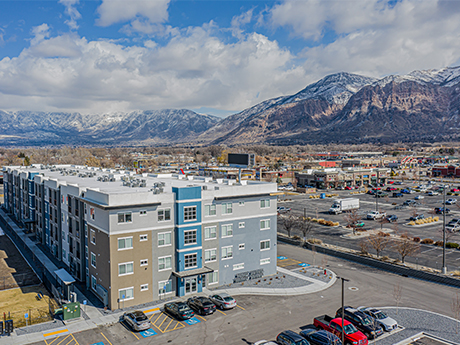— By Brett Silverstein —
With uncertainty looming large and terms like risk, crash and recession swirling around the industry, it comes as no surprise that some investors are clinging to their cash reserves. But savvy investors go back to the fundamentals of the real estate cycle. While the economic conditions that influence the cycle are often different, such as the Dot-Com bubble, the Global Financial Crisis and, most recently, COVID, the predictability of the real estate cycle is consistent.
In my opinion, a sound acquisitions strategy today is one grounded in acquiring high-quality assets below replacement cost in Intermountain West markets that exhibit strong fundamentals, such as outsized rent growth, continued strong household formation patterns and limited future supply growth.
Distress leads to discounts
Amidst the prevailing market turbulence, the acquisition of existing assets at a discount to the cost of building new ones becomes an even more compelling proposition. Replacement cost alone may not suffice as an investment metric, but the combination of discounted prices and robust market fundamentals creates the secret sauce of sound investment decisions.
Housing is an essential good that is always in demand and has historically inflated over time. The foundational concept of “heads in beds” doesn’t change, regardless of unprecedented economic factors. The key is to seek out the hidden gems with a solid physical plant and value-add potential in a desirable market.
Construction costs keep climbing
I firmly believe construction costs will continue to inflate over time. Certain input costs, such as lumber, might have plateaued or decreased recently, but overall construction expenses remain on a significant upward trajectory. Some markets in the Western states are seeing a surge in new deliveries in the short-term.
Regardless, our strategy focuses on markets with unique supply dynamics that benefit investors. For example, the northwest Montana area of Kalispell/Flathead County has virtually no additional supply coming online in the near term. While other markets in our portfolio may have increased incoming supply, I expect this to level off or disappear in the next few years as construction costs rise and construction debt becomes more difficult to obtain.
An eye on market fundamentals
We are continually assessing market and submarket fundamentals to understand the real-time changes in employment, in-migration statistics, household formation trends, housing affordability and upcoming housing supply (both for rent and for sale). This provides a deep and a broad understanding of our target markets.
The secondary Intermountain West markets we’ve identified share many of the same characteristics, such as systemic undersupply of housing, high quality of life characteristics, and strong and diverse employment structures. The lack of new supply has led to overall housing unaffordability and a growing renter base. This underscores the need for quality housing with sophisticated management.
These communities have experienced strong population growth in recent years due to the work-from-home trend, drawing in new residents with their outdoor access and relative affordability compared to larger metros. As long as these dynamics remain at play, I believe our markets will remain resilient through the rest of the “lazy” W-shaped recovery we’re all bracing for.
— Brett Silverstein is partner and chief acquisitions officer at Brinkman Real Estate in Denver. This article originally appeared in the October 2023 issue of Western Real Estate Business.


